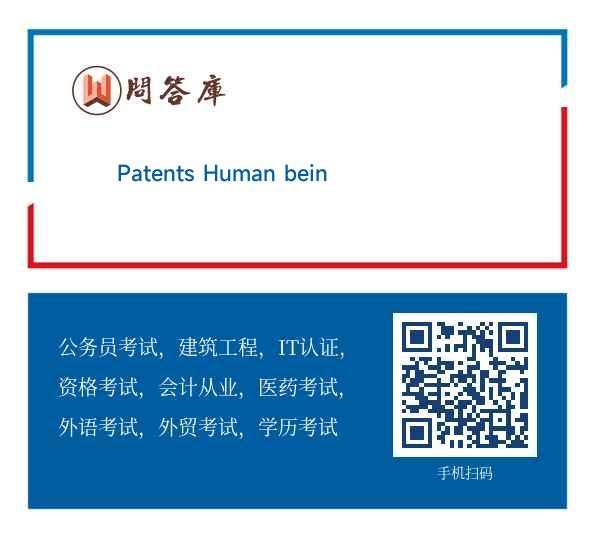Patents Human beings are competitive creatures
问题详情
Patents
Human beings are competitive creatures. The evolutionary drive towards survival of the fittest has made us that way, and contemporary man has carried the competitive urge to its highest form. We see it in all aspects of human activity, from the conflicts of two-year olds over possession of a toy through all the physical and intellectual competitions of school years to the ultimate struggles between races and nations for power and possessions. We learned early, however, that the forces of competition must be balanced with an equal measure of cooperation if all of us are not to be destroyed by the process. Organized society resulted, and successful societies have been those that have achieved the most effective balance of competition and cooperation.
Patent systems are among the most straightforward examples of such a successful, cooperative arrangement and show society operating at its best. Patent systems reward the competitive, creative drive with a temporary, limited, exclusive right, in return for the cooperation of an inventor in teaching the rest of society how to use his or her findings for all time thereafter. This philosophy must be kept in mind if one is to use and to understand patents effectively.
Early Patent Systems
Patent systems more or less as we know have been used as a social tool since the Renaissance. Rulers of the Italian city states recognized that their creative subjects needed encouragement and protection a gainst copying by their competitive fellows. Patents were granted for various terms, the most famous being a 20-year patent granted to Galileo on a mechanism for raising irrigation water to fields. European and English monarchs granted patents to encourage commerce and, unfortunately, to reward favorites of the court.
The US Patent System
The American colonies made a practice of granting patents to their inventors, and the United States Constitution provided the basis for our patent and copyright laws in Article 1, section 8:
The Congress shall have the power.., to promote the progress of science and useful arts, by securing for limited times to authors and inventors the exclusive right to their respective writings and discoveries.
This constitutional directive was given life by the Patent Act of 1790. The first US patent, signed by George Washington ,Randolph, and Jefferson, was in fact on a chemical subject. The inventor was Samuel Hopkins of Philadelphia, and his contribution to society was an improved method of making potash from wood ashes for use in soap making.
The distinguished committee made a diligent effort to meet their duty to examine all applications for patentable merit, but within three years it became clear that they simply could not give adequate study to every application being claimed. In 1793 a "registration" system was adopted by the United States, meaning that patents were issued on every application that met formal requirements and that the burden of sorting out priority of rights among those holding conflicting patents was thrown into the courts.
Perhaps it is a blessing that all the record from this period of disorders were destroyed by a fire in the Patent Office in 1836. The Congress then passed the Patent Act of 1836, which created the Commissioner of patents and a Patent Office to examine applications to determine whether a truly new invention had been made. Present US patents are numbered from the adoption of this law, and the series reached No. 4 000 000 on December 28,1976.
In 1887 the United States joined with many other countries in the Paris Convention. The present pa tent law of the United States is the Patent Act of 1952, the most important new feature being a workable definition of what constitutes invention. A movement to rewrite US patent law is in progress at this writing.
N
A.Y
B.N
C.NG
参考答案
正确答案:A
解析:本句的关键词是“a social tool”。据此我们在第三段找到“Patent systems more or less as we know have been used as a social tool since the Renaissance.”故判断为YES。
